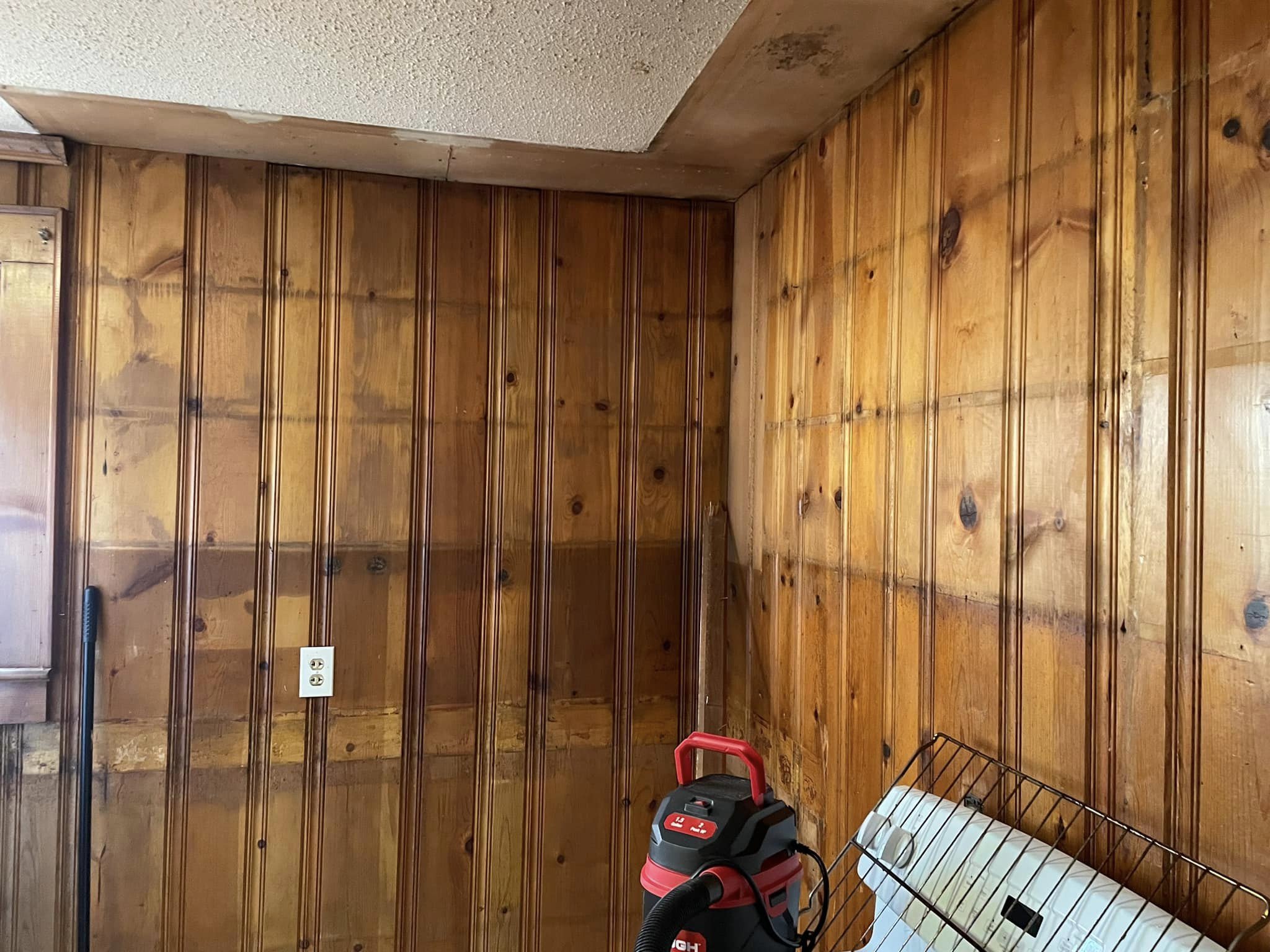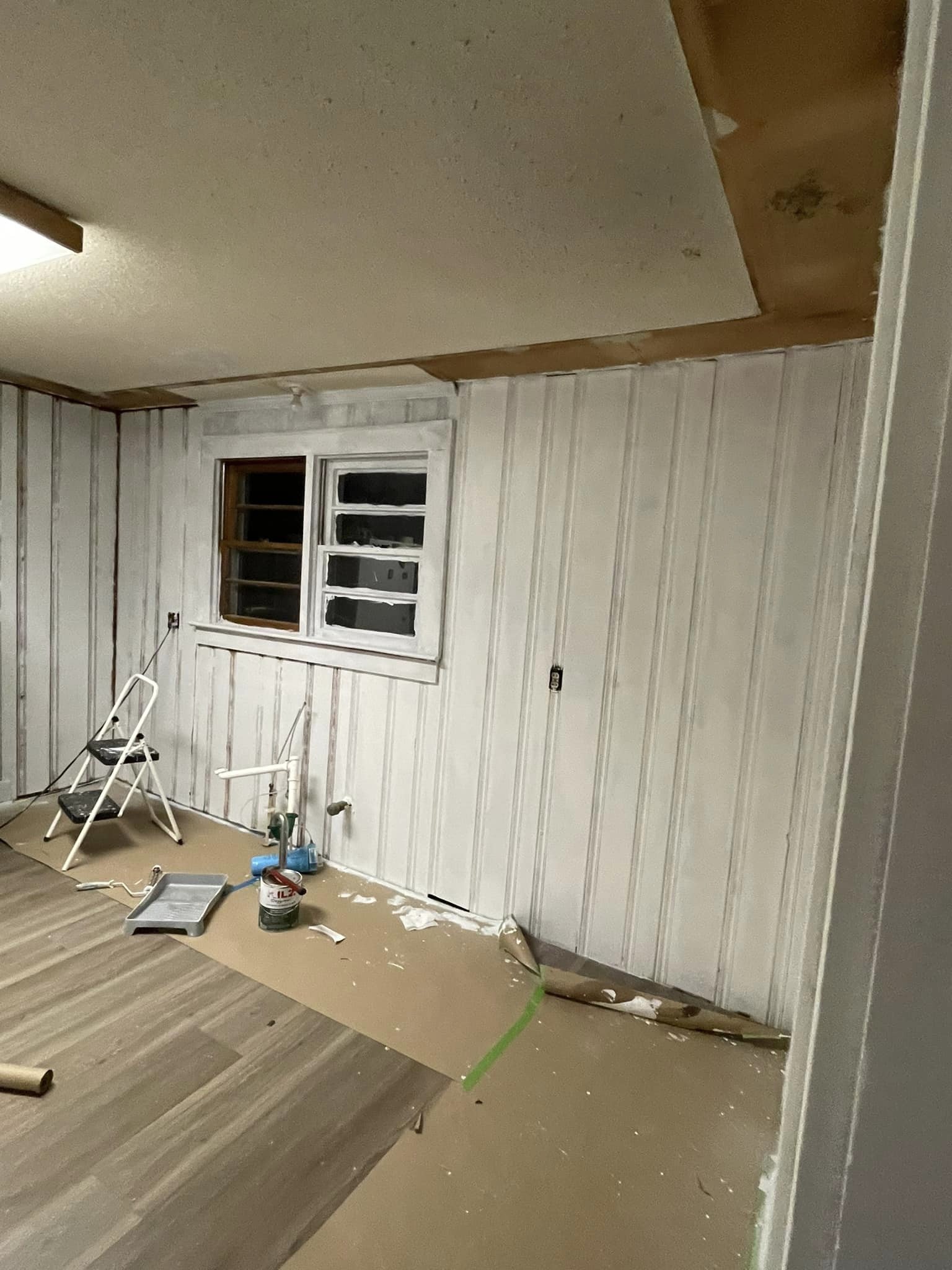How can I smooth out the texture left by using oil based primer on knotty pine walls painted with a thick roller?
9 months ago
Last Updated: September 18, 2024
Hey there! I need some help with my knotty pine walls. My brother used oil-based primer to cover them and applied it with a thick roller. Now that it’s dried, the texture is a bit rough instead of smooth. Any tips on how to fix it? Thanks a bunch!


Use sandpaper and some elbow grease.
Smooth it down first, and consider either renting or purchasing a sprayer for the final layer.
Give it a good sanding. I’d recommend starting with 180 grit, but depending on how rough it is, you may need to switch to a different grit.
Thankfully, he applied an oil primer that should sand down pretty smoothly. After sanding, try using Sherwin Williams Emerald Urethane, applying with a brush and a 3/8 inch nap roller. I like to call this paint line, “paint for beginners,” because even I can handle it.
Pull out the knot eraser…haha
Hey Frank, haha
Sand gently to smooth it out easily, just be careful not to sand all the way to the wood. It shouldn’t take long to get it ready for painting.
Hey there, it’s
He probably shouldn’t have been by himself
Impressive! To achieve a smooth finish, try using a brush for the gaps and a small roller for the top. While large rollers may be faster, smaller ones and some patience will give you a better result!
You can pick up a sprayer for around $300 at Lowe’s or Home Depot, and don’t forget to sand the walls with a drywall hand sander before spraying on the coat. If necessary, you can use a brush to even out the lines.
Matthew- thanks a lot. I was surprised to find that very few sprayers work well with oil-based paint.
Just so you know, oil base works in any sprayer
Oh man, Matthew, can you believe it? We got duped by so many folks. We reached out to a bunch of different people.
Once you’re done sanding, make sure to wipe it down before you start painting.
You’ll need to sand it with a hand-held drywall sander, using 80 or 100 grit paper or mesh until it’s smooth. After that, reapply primer using a combination of roller and brush if you prefer the brushed look. Use a 3/8 nap roller or 1/4, and use the brush while the paint is still wet – work on small areas at a time. It’s ideal to have one person rolling and another immediately following with the brush.
He should have used a back brush. Now, the only option is to sand it down gently
Just cover it up with 1/4″ drywall and you’re good to go.
1/4 inch drywall – hahaha…try using a belt sander & just go for it hahaha…
Give it a light sanding
I’m quite familiar with Coverstain and Kilz Original oil-based, you can apply enough to sand it down super smooth.
You could sand it down or try using cabinet and furniture rollers to cover it. We’ve had success with this method multiple times.
You have two options: sand it down multiple times with lower grit levels or apply 1/4″ drywall, mud, and tape to create a “new wall.” There’s no middle ground.
Hey Rick! I come from a family of three brothers, and the second one witnessed everything and made the same recommendation.
Honestly, if you go that way, I would recommend using 3/8” drywall; it’s more rigid and looks the same as any other type. 1/4” drywall can end up looking wavy if not installed perfectly.
Appreciate the shoutout, !
I’m sure someone has mentioned this before, but using a large circular drywall sanding pad with the long pole attachment will help speed up the process. Something around 100 or 120 grit should work well.
Smooth it out
Sand the surface. Consider investing in a sprayer for around $300 from Lowe’s or Home Depot. Use a drywall hand sander to prep the walls, then spray on a coat of paint. If necessary, use a brush to even out the lines.
Sand the surface. Apply thin layers of paint, making sure to sand in between each layer once it is completely dry. You’ll probably need around 3 coats for best results. This method should prevent the paint from peeling.
I have 30 years of experience painting interiors. Smooth out the surface by sanding. Suggest to your brother that he explore a different career path. Oil paint/primer won’t effectively conceal the knots as they will eventually bleed through. To cover knots, use a shellac-based primer. Dilute your finish paint slightly. Roll two boards at a time with a 3/8 roller head. Immediately brush over the rolled surface with a 3-inch brush for a smooth finish. I recommend using Benjamin Moore Advance paint in a satin finish for the final coats, as oil paint is challenging to find nowadays. I applied oil paint to my basement’s tongue and groove walls 30 years ago, and they still look fantastic.